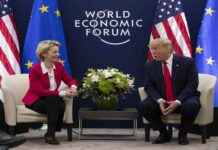Moneycontrol Pro Weekender | The next five years
All eyes are on the election results on Tuesday, June 4. The markets have turned skittish, worrying whether its favourite, the BJP, will come back with a decent majority, a majority that will enable it to continue with its business-friendly policies that have led to such a fabulous party on Dalal Street. On the other hand, the consensus is that if it does come back strongly, it’ll be even better than business as usual. S&P Global Ratings endorsed that view this week, not just by changing the outlook for the Indian economy from stable to positive but promising to upgrade its rating as well in a couple of years. Every report talks of the Indian economy’s magnificent resilience, which has enabled it to come roaring back from the depths of the pandemic, even as the rest of the world struggles to find its feet.
For the equity markets, the only clouds on the horizon are high valuations and possible tax changes in the forthcoming Union Budget. Investors have little doubt about the long-term India story. Shyam Sekhar, for instance, writes: “While politics always looked challenging to investor interests, it never really hurt investors in post-liberalisation India. That’s the hard truth.” Columnist Ananya Roy said policy continuity is priced in. My colleague Madhuchanda Dey wrote, “Given our positive long-term view of Indian equities, irrespective of the poll outcome, we feel investors should add equities taking advantage of the volatility in the market.’’
But it won’t be business as usual for the next government, nor the ones after it. For the world as we know it is changing dramatically, and for the worse.
The effects of climate change, for instance, have been hammered home this summer by the deadly heat waves across India and in many other Asian countries. The United Nations’ State of the Global Climate 2023 report says records were once again broken, and in some cases smashed, for greenhouse gas levels, surface temperatures, ocean heat and acidification, sea level rise, Antarctic sea-ice cover and glacier retreat. It adds that heatwaves, floods, droughts, wildfires, and rapidly intensifying tropical cyclones caused misery and mayhem, upending everyday life for millions and inflicting many billions of dollars in economic losses. The World Economic Forum says global warming has exceeded the target of 1.5°C above pre-industrial times for 10 months and counting.
The next government will have to take immediate action to combat the harmful impact of climate change — We can no longer afford to wait and waffle in international talkathons, while blithely adding coal-fired power. The government will have to acknowledge that greening the economy will be hugely disruptive and will come with serious costs.
The fight against climate change will also face a setback on account of the second great challenge the world faces — geopolitical turmoil. In his recent trip to Europe, Chinese President Xi Jinping pleaded with his hosts to avoid a New Cold War, to no avail –Europe is considering tariff increases on imports from China. The last few weeks have seen a flurry of tariff hikes by the US administration, escalating America’s economic war against China. This includes duties being raised on cheap Chinese solar panels and EVs, which, ironically enough, help fight climate change. A meeting of G-7 Finance Ministers cautioned of the pernicious effects on the rest of the world of Chinese overcapacity. On its part, China has warned the US by its war-like drills around Taiwan, which looked very much like a dress rehearsal for the real thing. Saibal Dasgupta wrote that the purpose of the drill was to test the ability of the Chinese military to seize power in Taiwan.
Trade and investment flows are being redirected along geopolitical lines. The WTO is comatose, the UN has long resembled the League of Nations. Studies show that in an extreme trade fragmentation scenario with limited ability of economies to adjust, losses could be as high as 7 percent of global GDP.
But the cost is not just economic. The mask of genteel cosmopolitanism has fallen, revealing the ugly face of naked self-interest and brute power, on clear display in Gaza. The world is splitting into two hostile camps and India is on the frontlines. This week, we published several analyses on a range of problems caused by geopolitics and rising protectionism, ranging from making visas for India IT workers more expensive to this FT article on the mounting strains on global shipping to the race for military domination in space.
The third major disruption the world will face is from Generative AI. At a recent meeting, Gita Gopinath, IMF Deputy Managing Director, said, “AI is likely to threaten a wider range of jobs than in past cycles, including higher-skilled cognitive jobs. An estimated 30 percent of jobs in advanced economies are at risk of being replaced by AI. That figure is 20 percent for emerging markets and 18 percent for low-income countries. In other words, the pool of potentially replaceable workers in future downturns will be bigger than anything we’ve seen before. The result could be unprecedented job losses.’’ In India, where we already have jobless growth and face millions of new additions to the workforce, creating employment opportunities will become an even bigger headache.
As Hemingway said in another context, the impact of these crises will come about, “gradually, then suddenly”. The new government in India, like all other governments, will have to prepare for unprecedented disruption.
If all this sounds like unrelieved doom and gloom, there are many silver linings.
Indeed, it is the job of investors to find opportunities in the midst of disruption. As this newsletter has been shouting from the rooftops, the new geopolitics has created a window of opportunity for India, it has given us a second chance at catching the missed manufacturing bus. The Amcham Shanghai 2023 China Business Report found that 40 percent of the companies surveyed said they were redirecting investments from China to other locations, including Southeast Asia, the United States, Mexico, Europe and India. A recent report by Blackrock said, “Within EM, we like India and Mexico as beneficiaries of mega forces even as relative valuations appear rich.” We wrote this week about India being among the preferred destinations in the global supply chain rejig. The stellar performance of our MC Pro Make in India index is proof enough of the benefits of spotting early and riding a theme of the times.
On the greening of the economy, we wrote about the Prime Minister’s goal of reducing electricity bills to zero by promoting the widespread adoption of rooftop solar panels in every household. We also analysed the new norms for tyre makers that could benefit recyclers.
We looked at the prospects of India clinching Free Trade Agreements in a fractured world and examined why enterprises are hesitating on Generative AI adoption. Here’s another story on how the high cost of Gen AI is slowing adoption. And we warned of the disruptive power of technology on retail traders.
Naturally, we also drilled down to individual stocks that will either benefit or suffer from the new disruptive forces. We said, for example, that the medium-term opportunity for Divi’s Lab is aided by the western world’s shift in high-tech engagements from China to other countries. We pointed out how Galaxy Surfactants has been affected by the Red Sea crisis and how Hindalco has benefited from high aluminium prices because of the tightness in global supply and US and UK sanctions on Russia.
Given the overarching need for security in the current geopolitical environment, we looked this week at Hindustan Aeronautics’ strong order growth, but at the same time drew attention to the elevated valuations of PSU stocks. And, while analysing Protean e-Gov Technologies, we pointed to another big trend — digitalisation — and wrote: “To be in sync with the fast-changing world, the investment process needs to be supplemented with a thematic approach, which seeks to identify stocks that could benefit from a particular trend. Many new trends have emerged — from renewable energy to artificial intelligence, but the one that can’t be missed is India’s digital journey.’’ This FT column by Martin Wolf, free to read for Moneycontrol Pro subscribers, looked at another big transformative shift — falling fertility rates.
The markets have already taken note of the new disruptive technologies at work — the mind-boggling rally in Nvidia is a prime example. But the surfeit of liquidity in the markets has buoyed all stocks, including the ones that could lose out from the new forces that will be unleashed. Also, the listed companies are the cream of the country’s enterprises and the worst impact of the disruption would be felt by the smaller unlisted firms that do not have the finances, the technology or the managerial bandwidth to keep up with the times.
That is where the role of the new government comes in. It will need to have a road map, a sense of the dangers and opportunities ahead and the ability to take bold decisions for the long term. It will need vision, courage, and a firm hand on the tiller.
If it doesn’t have those qualities, then all we can do is echo Woody Allen: “More than any other time in history, mankind faces a crossroads. One path leads to despair and utter hopelessness. The other, to total extinction. Let us pray we have the wisdom to choose correctly.” Cheers, Manas Chakravarty
Here, in case you missed them, are some of the stories and insights we published this week, apart from our technical picks in the equity, commodity and forex markets:
Stocks
Saregama, Senco Gold, Ashok Leyland, EaseMy Trip, Shaily Engineering, Cello World, NMDC, Control Print, LIC, PG Electroplast, Sundaram Finance, IRCTC, Tata Steel, Trent, Emami, MTAR Technologies, IRCON International, Position for a global growth proxy before a domestic risk event, Tata Steel, Cummins India, SAMHI Hotels
Markets
GuruSpeak: Cracking the position-sizing riddle; Expect low to mid-teens earnings growth in Nifty in FY25; SEBI turns heat on ‘pump and dump’ perpetrators; Can SEBI’s volatility management exercise reduce inter-day spikes; Nasty for markets if NDA doesn’t get mandate: Ramdeo Agrawal; FPI stampede from financial sector stocks points to looming risks, Oil prices
How to hedge your portfolio for election verdict
Financial Times
How BHP’s fractious pursuit of Anglo American unravelled
No more excuses: central bankers need to get back ahead of the curve
Companies and sectors
Steel output dips sharply; How to harness tourism’s potential—lessons from Japan; Will the insurance whale turn into a shark? India’s dependence on urea imports drops sharply; What Novelis’s IPO pricing means for Hindalco’s valuations; India’s luggage industry
Economy & Policy
RBI crackdown on Edelweiss ARC reveals a worrying governance landscape
The different shades of consumer confidence in India
Pro Economic Tracker
Decoding Economics: Do Umpires play with a straight bat?
Recoveries through insolvency code remain disappointing, eight years on
Behind the RBI’s record dividend
Is the sun about to set on the US dollar soon?
Politics
How the scrapping of the OBC list led to further polarisation in West Bengal
Tech & startups
Is the India consumption story picking up for start-ups?
Personal Finance
Looking to invest in overseas MFs? Find out which funds are open
Betting on India’s manufacturing sector: Can this new theme fund win the race? A Moneycontrol review
















